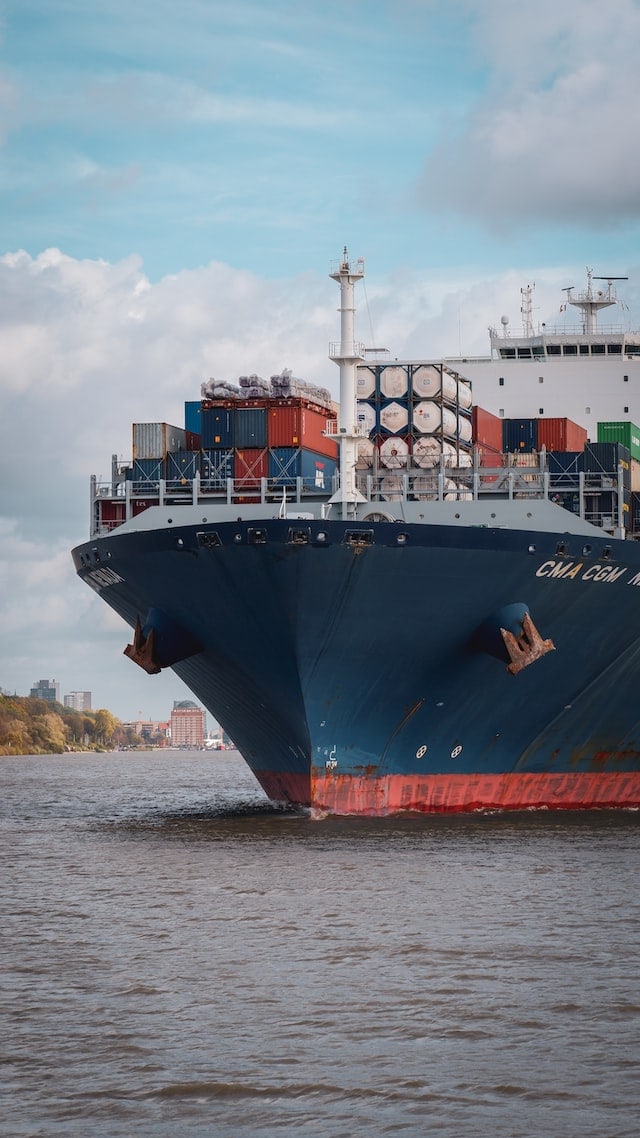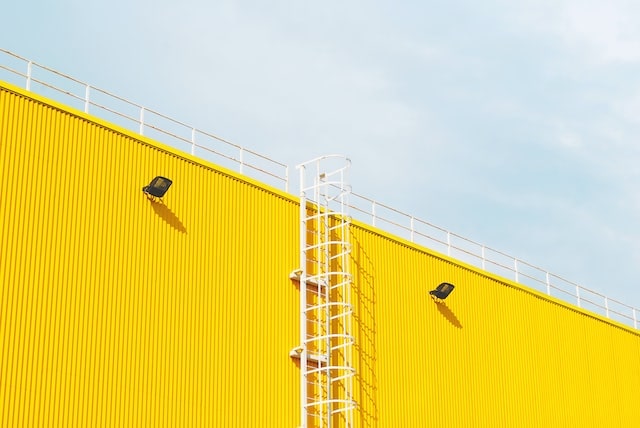Organic Paint Additives and Coatings
Algae Polymers Additives for Protective Paint and Coatings
Corrosion is the gradual degradation of materials over time, due to chemical or electrochemical reactions. While some of the processes are visible, others are less predictable. The deterioration of metals is generally related to their reactivity. Metals lower in the reactivity series exhibit less oxidation potential than their higher reactivity counterparts. A better understanding of the basic science of corrosion in marine environments can help you make informed decisions about the life of assets. Knowing more about corrosion science will help you decide whether or not to sound the alarm when you detect rust. For example, the formation of patina on weathering steel is the key to its enhanced resistance to corrosion. Advanced surface analytical techniques can characterize the rusts that result from accelerated tests. In addition to enhancing corrosion resistance, accelerated tests also help improve understanding of the mechanisms that occur in marine environments.

Microbiologically influenced corrosion MIC is a complex process. Approximately 20% of corrosion damage is microbial in origin. MIC is often overlooked in failure analysis, because its identification is difficult and requires knowledge of the active microorganisms that cause corrosion. Therefore, this process is best viewed as a multidisciplinary process that involves the understanding of multiple processes. In addition, biocide treatment can enhance the effect of biofilms and reduce their negative impact. These biofilms are an important source of corrosion in many industries. Among the different kinds of microorganisms, microbial corrosion is the most common. Different types of microorganisms, called chemoautotrophs, are involved in causing corrosion in metal. Depending on the type of microbial activity, corrosion can occur on both metallic and non-metallic materials. Microorganisms also influence the surface chemistry of metals, as they can cause oxidation of metals.
Another important factor to understand is that corrosion is a complex electrochemical process. When two metals come into contact with one another in a saltwater environment, they make a hydrogen ion that reduces the oxygen in the air. This hydrogen ion is then present in the water. Aluminium and copper corrode more rapidly than steel when exposed to seawater. It is important to understand the process of corrosion before starting any project.
Crevice corrosion occurs whenever a metal’s ionic concentration is different from two local areas. It typically affects gaskets, the undersurface of washers, and bolt heads. All grades of stainless steel and aluminium alloys are susceptible to crevice corrosion. This process is caused by the existence of a differential aeration cell inside the crevices. As a result, it’s easier for the metal to rust than to oxidize.
Passivation is an important way to minimize corrosion damage. Even if a material is of the highest quality, it can still corrode if its ability to form a passivating film is impaired. Therefore, proper selection of material is crucial for long-term performance. Atmospheric corrosion relies on humidity in the air to act as an electrolyte. The oxide layer that forms on the corroded surface is also a solid electrolyte.

Algae Polymers as Preventive Measures against Corrosion and Biofouling
When taking consideration, the influence of corrosion and biofouling in marine environments, there are two main types of biofouling that take place in marine eco systems. The first is microfouling. Bio Micro Fouling occurs immediately within the first hours of exposure of a surface in a marine water coulomb. Biofilm is very difficult to prevent and also very difficult to remove from a surface. The organisms responsible for this under water reaction are small micro cellular non calcareous species such as algae, seaweeds and other plant marine plant life. The second is Macro fouling. Macro fouling is the formation of hardened layers of calcareous species such as barnacles and mussels that adhere to a surface and are also difficult to prevent and remove. Biofilm Microfouling is the most critical in the Gas and Oil Industries since it occurs with greater consequence in the petroleum crude oil, elevating the cost of transporting the crude to the refineries. The viscosities of the crude increase with biomass and produce inferior quality finished products. Algae Polymers can be used as a Biofilm Antifouling Coating and also when applied under a different delivery and formulation, it can be used as an additive that will produce better performance for extraction and drilling in the Gas and Oil industries. Oil and Gas facilities are susceptible to microbiologically-related problems where there is long-term exposure of metals to bio- film corrosion related microbes including aerobes, slime formers, iron-related bacteria, anaerobes, organic acid-producing bacteria, and sulfate-reducing bacteria (which produce corrosive sulfides and consume hydrogen ,which are found both in water and in hydrocarbons carrying even small amounts of entrained water, water, nutrients (principally the hydrocarbons themselves), and corrosive ions such as chloride. These conditions require the immediate attention to eliminating corrosion in the internal portions of the pipelines of oil and gas facilities where water, microbes, nutrients, and salts accumulate, such as at low points in pipelines, valves and the bottoms of processing and storage tanks.
External corrosion of Oil and Gas facilities, including pipelines and storage tanks, occurs because coatings have developed extreme disbondments. When these areas of disbondment come into contact with soils that contain microbial, chemical, and conductivity conditions permissive of microbial colonization of the pipe under the disbonded coating, internal biofilm can rapidly develop. Cathodic protection is ineffective in controlling this corrosion since the corrosion is occurring below the disbonded coating and, therefore, is shielded from Cathodic protection. The occurrence of microbial and biofilm corrosion and its severity is determined largely by local conditions, which can change within a space of inches.

Microbiologically Related Problems in The Oil and Gas Industry Systems
Oil and gas industry systems may experience a variety of microbiologically related problems. Such as:
- Reduced porosity in production and storage zones—and, thereby, reduced production rates due to microbial biomass and biofilms.
- Plugging of process and filtration equipment—including those in service stations, vehicles, and boats and ships—due to biofilms and deposition.
- Souring of production and storage zones as a result of contamination during drilling and completion (especially when polymers with improper biocides or insufficient levels of biocides are used) or through use of materials added to enhance production, such as water and other materials.
- Compromised system component integrity in production equipment, pipelines, processing equipment, and storage tanks in processing and distribution facilities due to under-deposit pitting type corrosion.
- Component failures due to under-deposit leaks.
Zero Thermal™ (ZT) is the lowest cost and highest performing non biocide paint and protective coating in the industry.
Zero Thermal™ (ZT) is a U.S. Patented Organic Additive which is a Algae based Elastomeric Polymer (Marcos Gonzalez Inventor) is combined with water soluble resins and adhesive polymers of organic and inorganic properties to produce paints and protective coatings. Zero Thermal™ Algae based polymer under R&D, and tested an advanced Algae Based, and USDA Certified Bio-based Labeled Organic Non-Biocide paint and coating with improved Anti-Fouling, and Biofilm Protection. The Coatings also have shown superior “Self-Healing” Anti-Corrosion, and intense UV Protection.
The additive may be proportioned from 1-20% algae-based polymer to base resin in order to achieve the following results:
- ZT MarineOne™ Anti-Fouling Paint and Anti-Corrosion/ UV Protective Paint are both USDA Certified Organic with a 68% Organic Base.
- ZT MarineOne™ Anti-Fouling Paint, and Anti-Corrosion/UV Protective Paint are both water based and contain no metals or biocides.
- ZT MarineOne™ Anti-Fouling Paint, and Anti-Corrosion/UV Protective Paint are both faster drying, and can be atomized (Sprayed-On).
- ZT MarineOne™ Anti-Fouling Paint, and Anti-Corrosion/UV Protective Paint are both a 2-Coat and 2 Part System.
- ZT MarineOne™ Anti-Fouling Paint surpassed the requirements producing a higher standard, released 100% Clean at 60 PSI, where the industry standard currently used by the regulatory entity known as “International Paint INTERSLEEK 900” released clean 100%, at 205 PSI.
